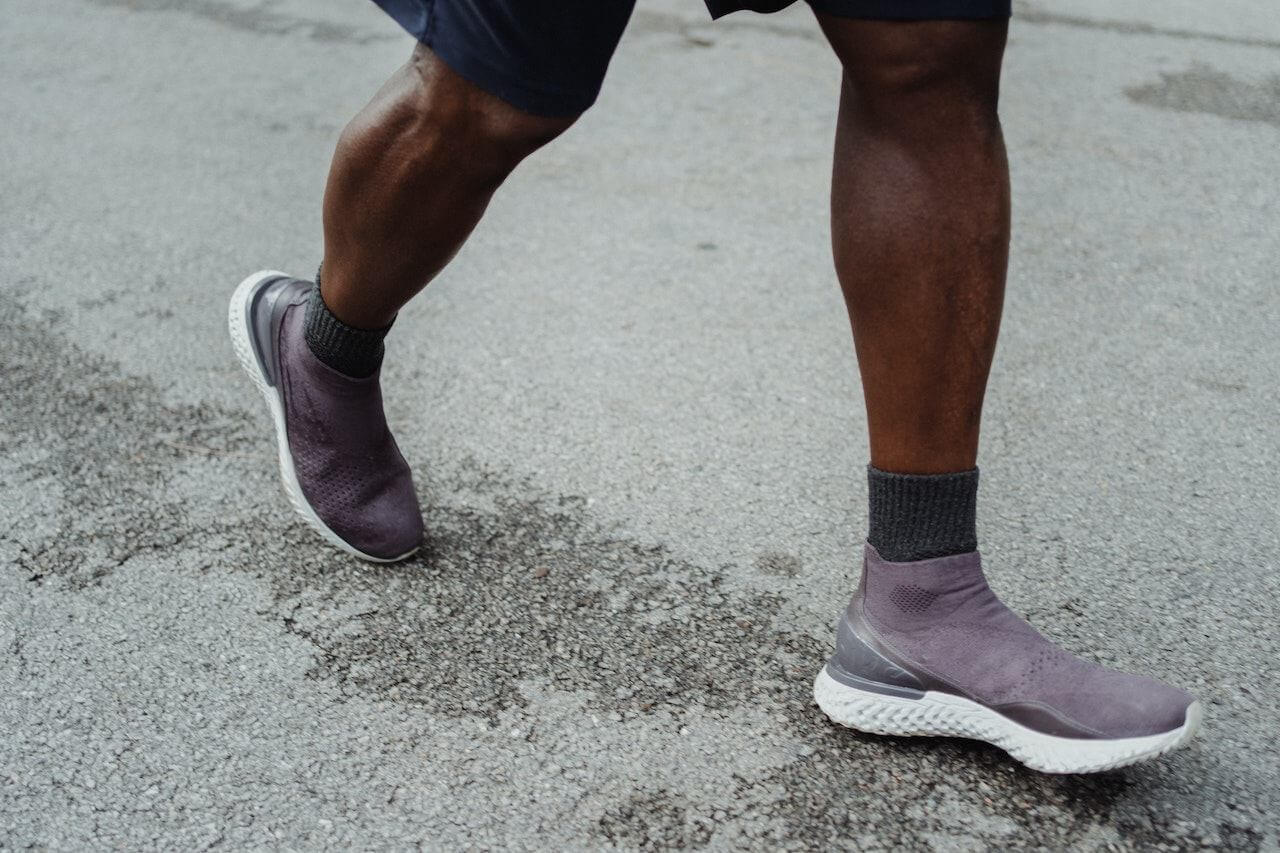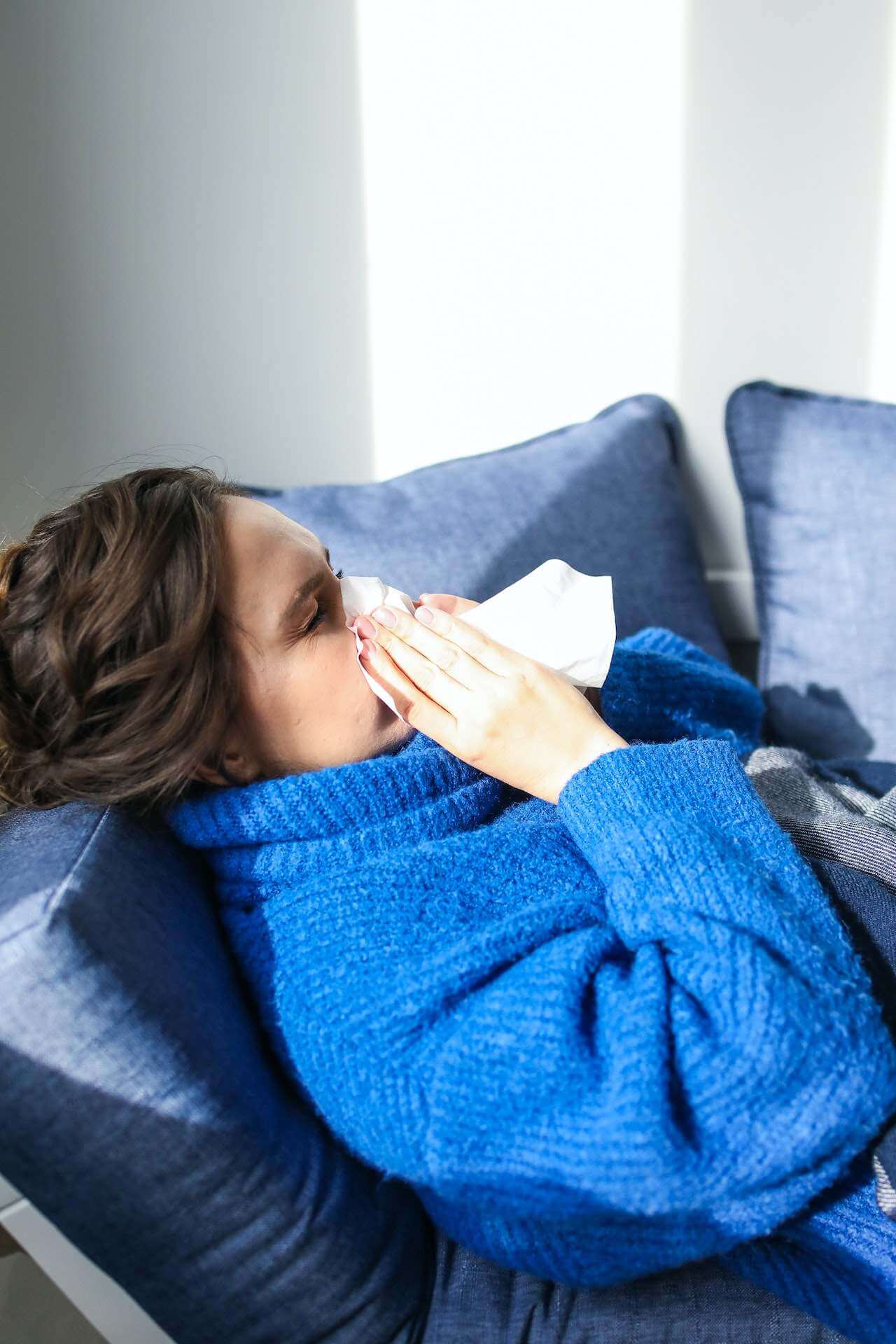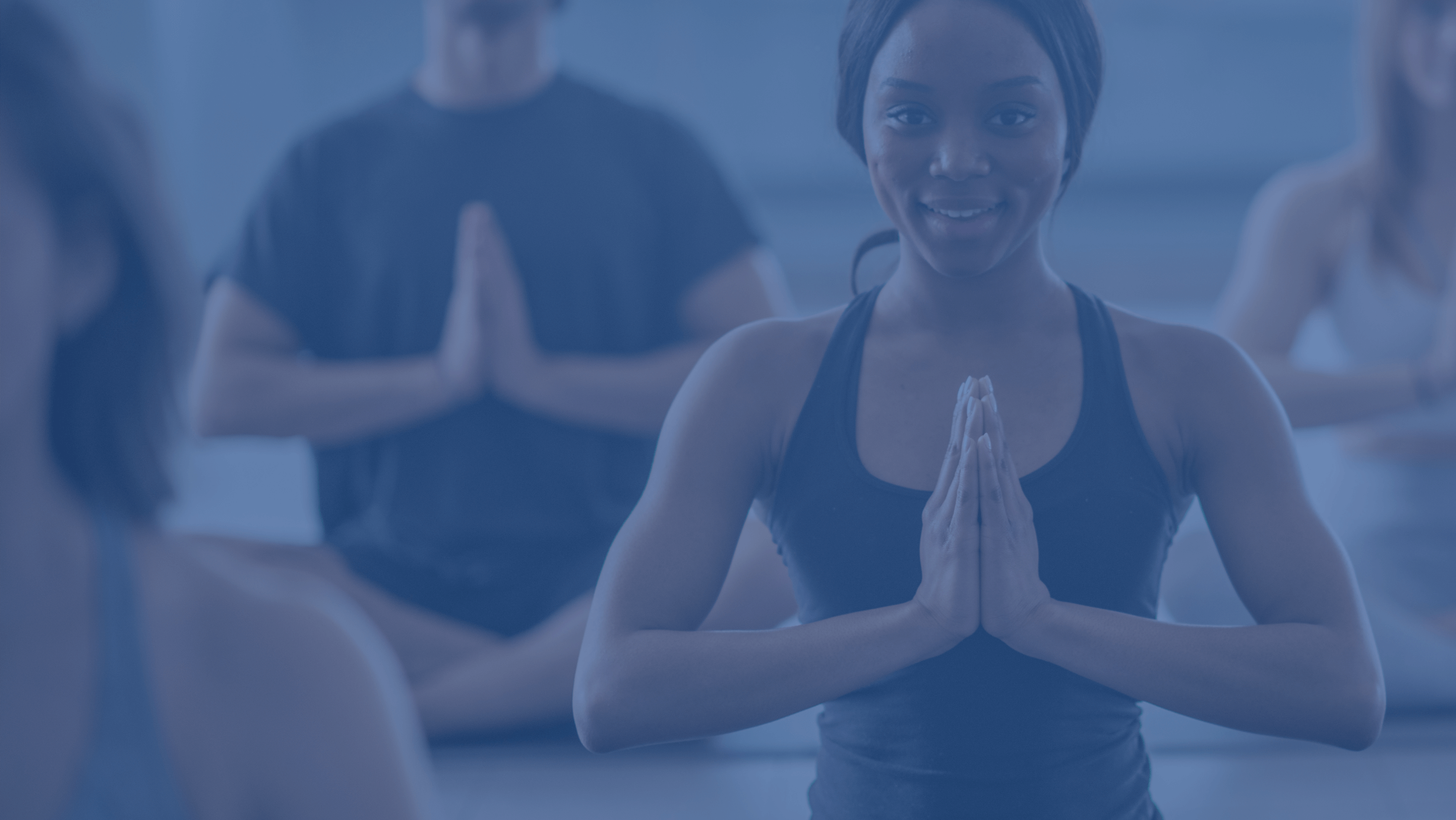Have you ever had to miss workouts for a few days or weeks because of a cold, the flu, or a more severe illness? It can be very frustrating, especially when you finally progress and find your groove with a regular exercise schedule; however, health and fitness professionals debate whether it is safe to work out while sick. While some believe it can help alleviate symptoms during mild colds, others argue that rest is crucial for a speedy recovery.
In this article, we will delve into this age-old question and explore the benefits and risks of exercising while sick and when it is more important to rest.
{{mid-cta}}
Why is it Important to Rest When You’re Sick?
When you're sick, your body is already under stress, and pushing yourself too hard can potentially worsen your condition. Your symptoms can worsen in the first one to two days, so listening to your body and immediately taking the rest you need may help you recover faster and avoid further illness.
By engaging in physical activity, especially intense exercise like running and HIIT classes, you're diverting valuable energy resources away from your heart, lungs, and immune system. The increased stress raises your cortisol (a stress hormone) and weakens your immune system. Moreover, rest is vital in reducing inflammation and promoting tissue repair.
When you're sick, your body may experience inflammation as a natural response. Overexerting yourself through exercise can exacerbate this inflammation, prolonging your recovery time. Resting helps redirect your energy towards fighting off the illness, allowing your body to repair damaged tissues and regain strength again.
Lastly, staying away from the gym when sick reduces the spread of contagious illnesses. Many respiratory infections, such as colds or the flu, are highly contagious. Taking time off from physical activity reduces the risk of transmitting the illness to others, especially in shared spaces like gyms or fitness studios. It's essential to be considerate of others and prioritize their health by refraining from exercising in a gym until you fully recover.

When is it Safe to Exercise?
If you have mild symptoms but are unsure if exercise is safe for you, consider the neck rule. Physicians say it is safe to exercise if your cold symptoms are mostly above the neck (i.e., runny nose, head colds, mild sore throat, sneezing, etc.). If your symptoms are mainly below the neck (i.e., chest congestion, muscle aches, cough, nausea, diarrhea, etc.), it is best to give yourself time to rest and recover.1,2 Here is a list of minor symptoms that are considered safe to exercise with while feeling sick:
- Sore throat: A sore throat can be minor when accompanied by allergies or a common cold. It is typically safe to exercise with a sore throat unless you are experiencing other symptoms such as congestion, a fever, or difficulty swallowing.
- Mild cold: By definition, this is a viral infection of the nose and throat. If you have enough energy and only mild symptoms, short walks or low-intensity/low-impact activities may help alleviate your symptoms.
- Stuffy nose: If fever or other symptoms do not accompany nasal congestion, then exercise has been shown to help open nasal passages and help alleviate the discomfort of sniffles and a stuffy nose.3
- Earache: This is a sharp or dull burning ache in one or both ears and is typically due to an infection, especially in areas other than the ears (i.e., throat, teeth, jaw, etc.). If you do not have a fever and no other symptoms, it is safe to exercise with a mild earache. However, infections or pain in your ears can poorly affect your balance, so be cautious if you feel dizzy or off-balance with your earache.
The decision to exercise while sick ultimately depends on the nature and severity of your illness and your overall well-being. While light to moderate exercise can offer some benefits, intense workouts should be avoided when your body is already under stress. Always prioritize rest, listen to your body, and consult a healthcare professional if you're uncertain.
When is it Best to Skip the Gym?
While light exercise can sometimes be beneficial when you're sick, there are specific circumstances when it is best to skip the gym altogether, especially if you are contagious.2,3
Here are some symptoms for which it's generally advisable to skip the gym:
- Fever: A fever is an internal body temperature at or above 99.4 degrees Fahrenheit. Exercising with a fever can be dangerous as it may lead to dehydration and decreased muscle strength.4
- Vomiting or diarrhea: Both vomiting and diarrhea can lead to dehydration or further GI distress, especially if you are also experiencing a lack of appetite and cannot maintain water or electrolyte consumption. It is best to rest from exercise to avoid dehydration.
- Productive cough: A productive cough refers to any phlegm or substance being coughed up from your respiratory system. This can be a sign of further viral or bacterial infection and will likely be worsened by exercise.5
- Body aches: Feeling aching pain in your muscles and joints is typically a sign of something more systemic (i.e., flu, infection, etc.). Exercising with body aches can cause worsening of your illness and potential for injury due to muscle weakness.
- Fatigue: Feeling extreme exhaustion can be a sign of a more serious illness. Your body wants you to rest so you can recover quickly. Pushing yourself with exercise while feeling extreme exhaustion may worsen your symptoms, create chronic fatigue, and cause further injury or illness in the long term.6
General Good Workout Practices When You Are Sick
Once you’ve recognized the severity of your symptoms and feel that it is safe for you to exercise, then consider these few tips if you are exercising while sick:
- Keep exercise intensity low: Choose low-impact, gentle activities on your body. Walking, stretching, or practicing gentle yoga can help increase blood circulation and well-being without straining your immune system. Avoid high-intensity exercises such as heavy strength training, running, or activities that put you in a higher heart rate zone.
- Consider reducing duration: Aim for shorter bursts of activity with longer rest breaks. Even a 10-minute walk has health benefits but is gentle on your body while sick. This allows you to benefit from movement without overtaxing your body's energy reserves.
- Be mindful of your sweating and keep hydration levels high: Drink plenty of fluids before, during, and after your workout. Staying hydrated is crucial, especially when you're sick, as it helps support your immune system, prevents dehydration, and aids in flushing out toxins.
- Avoid the pool if you have GI issues: If you are experiencing diarrhea specifically, avoid exercising in the pool, as you could contaminate the water with the many different types of bacteria (i.e., Giardia, Cryptosporidium). The U.S. CDC recommends avoiding the water until you’ve gone two weeks without diarrhea.7
- Skip group activities and sports: If you're contagious or prefer to minimize contact with others, consider home workouts instead of group activities. Numerous online resources and workout apps offer guided exercises you can do from the comfort of your own home. This way, you can tailor your workout to your energy levels and avoid exposing others to potential illnesses.

These are general recommendations, and it's important to consult with a healthcare professional, especially if you have a pre-existing medical condition or are unsure about exercising while sick. Ultimately, your health and well-being should be the top priority, and listening to your body throughout the process is crucial.
How Long Should You Rest For and When Should You Get Back to Exercising?
Returning to exercise after being sick should be gradual and approached with caution. Ensure you allow enough time to fully recover before resuming your regular workout routine.
Here are some factors to consider when determining when to get back into exercise after being sick:
- Wait until your symptoms have resolved: Make sure your symptoms have completely resolved before reintroducing exercise. This includes the absence of fever, coughing, congestion, fatigue, and other symptoms associated with your illness. Returning to exercise too soon can hinder your recovery and potentially prolong your illness.
- Check your energy levels: If you still feel excessively fatigued or lack the stamina for even light physical activity, it's a sign that your body needs more time to recover. Wait until you feel sufficiently rested and re-energized before you start exercising.
- Reintroduce exercise gradually: When you're ready to resume exercise, start slowly and gradually increase the intensity and duration of your workouts. Begin with lighter activities and shorter sessions, allowing your body to adjust and regain its strength. Over time, you can gradually increase the intensity and duration of your workouts as your fitness levels improve.
- Seek clearance from your doctor: If you have a severe illness or are unsure about the impact of your illness on your ability to exercise, it's advisable to consult with a healthcare professional. They can provide personalized guidance and ensure you're medically cleared to resume physical activity.
Each person's recovery timeline may vary based on the nature of their illness, overall health, and individual circumstances. Be patient with yourself and prioritize your long-term well-being over rushing back into intense workouts. Allowing your body the time to recover fully will minimize the risk of setbacks and set the stage for a more sustainable and enjoyable return to your exercise routine.
Learn More About How to Achieve Better Health Through Exercise with Signos’ Expert Advice.
If you have more questions on improving your health, fitness, and nutrition, seek the expert advice of the Signos continuous glucose monitor and Signos team. A continuous glucose monitor (CGM) can give you the insights to make smarter nutrition and exercise choices. The Signos app provides a unique, personalized program to help you lose weight and reach your health goals. Take this quiz to see if Signos is a good fit for you and reach your goals faster than ever before.
- Item 1
- Item 2
- item 3
Topics discussed in this article:
References
- American Lung Association. (2019, February 26). Can You Exercise With a Cold? Retrieved from: https://www.lung.org/blog/can-you-exercise-with-a-cold
- Börjesson, M., Arvidsson, D., Rensburg, C. J. V., & Schwellnus, M. (2017). Return to Play After Infectious Disease. Return to Play in Football: An Evidence-based Approach, 755–769. https://doi.org/10.1007/978-3-662-55713-6_56
- Pavol Surda, Chrysostomos Tornari, Matus Putala, and Abigail Walker. (2019). Exercise and Rhinitis in Athletes. European Medical Journal; 4(3): 120-126.
- Dick, N. A., & Diehl, J. J. (2014). Febrile illness in the athlete. Sports Health, 6(3), 225–231. https://doi.org/10.1177/1941738113508373
- Matthew J. Martin and Tim W. Harrison. (2015). Causes of chronic productive cough: An approach to management. Respiratory Medicine; 109(9), 1105-1113. https://doi.org/10.1016/j.rmed.2015.05.020
- Susde Parker M. Ed., Peter Brukner M.B.B.S., F.A.C.S.P. & Malcolm Rosier Ph.D. (1996). Chronic fatigue syndrome and the athlete, Sports Medicine, Training and Rehabilitation; 6(4): 269-278. DOI: 10.1080/15438629609512057
- Centers for Disease Control and Prevention. (2023, May 1). Diarrhea and Swimming. Retrieved from: https://www.cdc.gov/healthywater/swimming/swimmers/rwi/diarrheal-illness.html#:~:text=Each%20of%20us%20can%20help,after%20diarrhea%20has%20completely%20stopped.










.jpg)





















